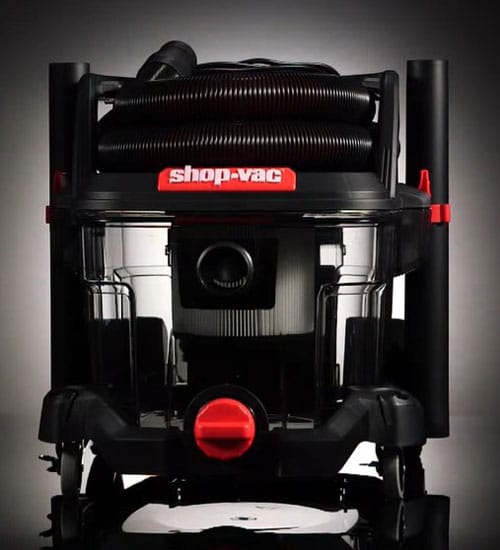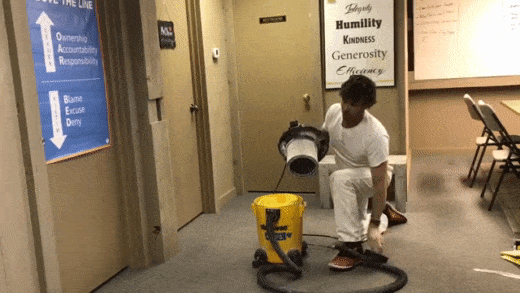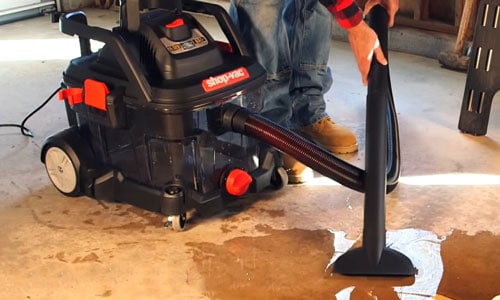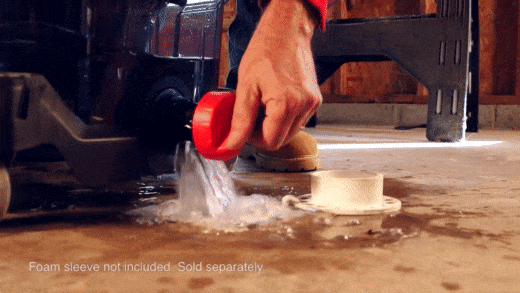Though it is a lot louder than your regular household vacuum cleaner, a shop vacuum cleaner is also more powerful. More importantly, a shop vac has the unique ability to suck up liquids such as urine, water, or even wine.
Thus, when you have any kind of watery mess in your house or workshop, a shop vac will be a handy tool to have. But how exactly can you suck up water using a shop vac?
At the end of this how-to guide, you will have the answer to how to use a shop vac to pick up water? You will also know what kind of shop vac you need for this job and what additional accessories you will require.
Process of How To Use A Shop Vac To Pick Up Water
What you need to have
- Shop-vac with wet-dry capabilities
- Water suction attachment
- Water collection tank
- A power receptacle to connect the sho-vac
Step One: Ensure You Have The Right Vacuum Cleaner
All vacuum cleaners, shop vacs included are used predominantly for cleaning up solid messes. This includes dust, wood chippings, and other types of debris. For woodworking, you will be dealing with this kind of debris a lot.
However, spilled water and other liquids are a different kind of mess altogether. That being said the best shop vac for woodworking would not necessarily be good for cleaning up water messes. This is especially if the water is mixed with other solid debris.

To clean up any water mess, you will need a wet-dry shop vacuum cleaner. This is a cleaner with the ability to suck up solid debris as well as water.
Step Two: Remove and Check The Collection Tank
Some shop vacs feature a dust bag and a collection tank, while others feature a collection tank for all types of dirt and debris. If your shop vac falls in the former category, be sure to remove the dust bag.

Also, remove the collection tank and ensure it is empty. This is especially if your shop vac has one collection tank for everything. It may also be a good idea to clean the tank before placing it back in the shop vac.
Step Three: Remove The Filter
Unlike solid dirt and debris, you do not need a filter to vacuum liquids such as water. Furthermore, liquids can damage the filter of your shop vac. Thus it is best to remove the filter before using the shop vac.

Removing the filter to suck up water will allow you to clean it and ensure it’s free of dirt. Not all shop vacs are the same, though, and some models allow the filter to remain when sucking up a little amount of water.
It is important to go through your vacuum’s manual to see whether it is possible to remove the filter.
Step Four: Attach The Water Suction Accessory

Shop-vacs come with several hose attachments, and one of them is designed specifically for water and other liquids. This attachment is recognizable thanks to its squeegee nozzle that is attached to it.
Step Five: Turn On The Shop Vac
Plug the shop vac into the nearest power outlet. But before turning on the vacuum cleaner, ensure the power cord is not exposed to the water you want to clean. Now start the suction.
Step Six: Unplug The Shop Vac
Most shop vacs have a sort of ball mechanism that stops suction when the tank is full. This mechanism causes the vacuum cleaner to produce a high pitched noise. When you hear this noise from the motor, it means the tank is full.
The next thing to do is to shut off the vacuum cleaner and remove the collection tank for emptying. There are two ways you can empty the tank, depending on the shop vac model you are using.

The first is by removing the head of the cleaner and pouring the water outside. The other method is through the drainage port. It is worth noting that the more water the tank has, the heavier it will be.
Before returning the tank into the shop vac, it is always a good idea to clean it. Use warm water and dish soap to clean the inside of the tank. Also, make sure the tank is dry before returning the filter.
Conclusion
As you can see, using a shop vac to clean up any kind of watery mess is not complicated. In fact, it is the same as using your regular vacuum cleaner to clean up any other kind of mess.
The only difference is that you need to note things before you turn on your shop vac to clean up any water on the floor.
